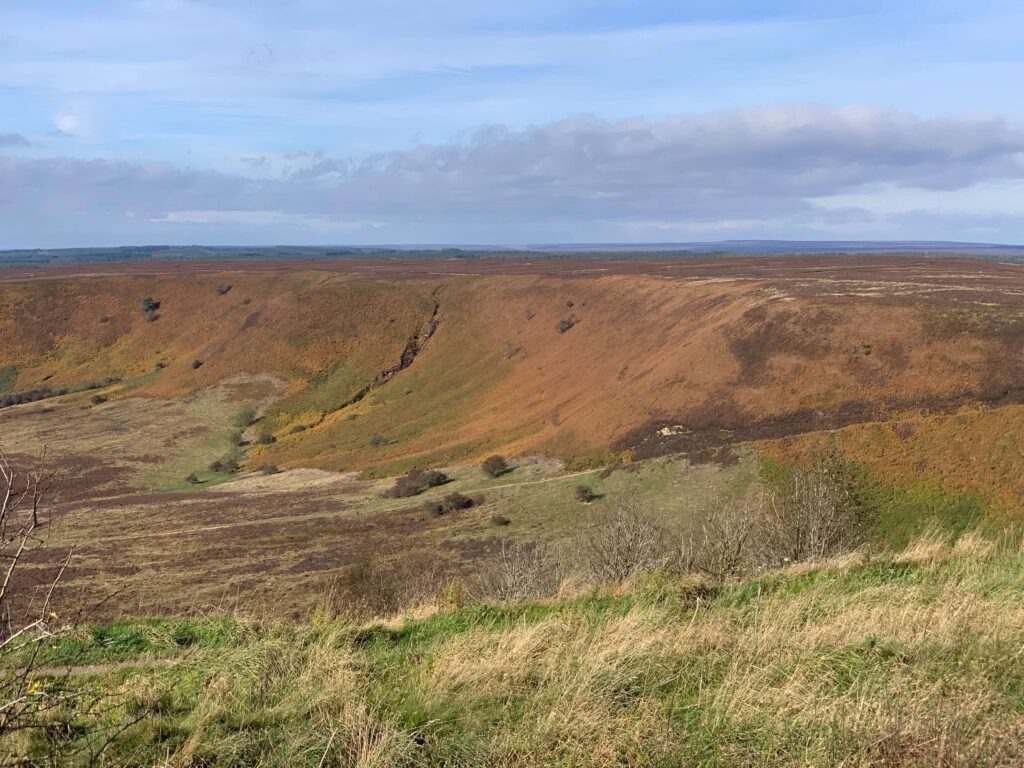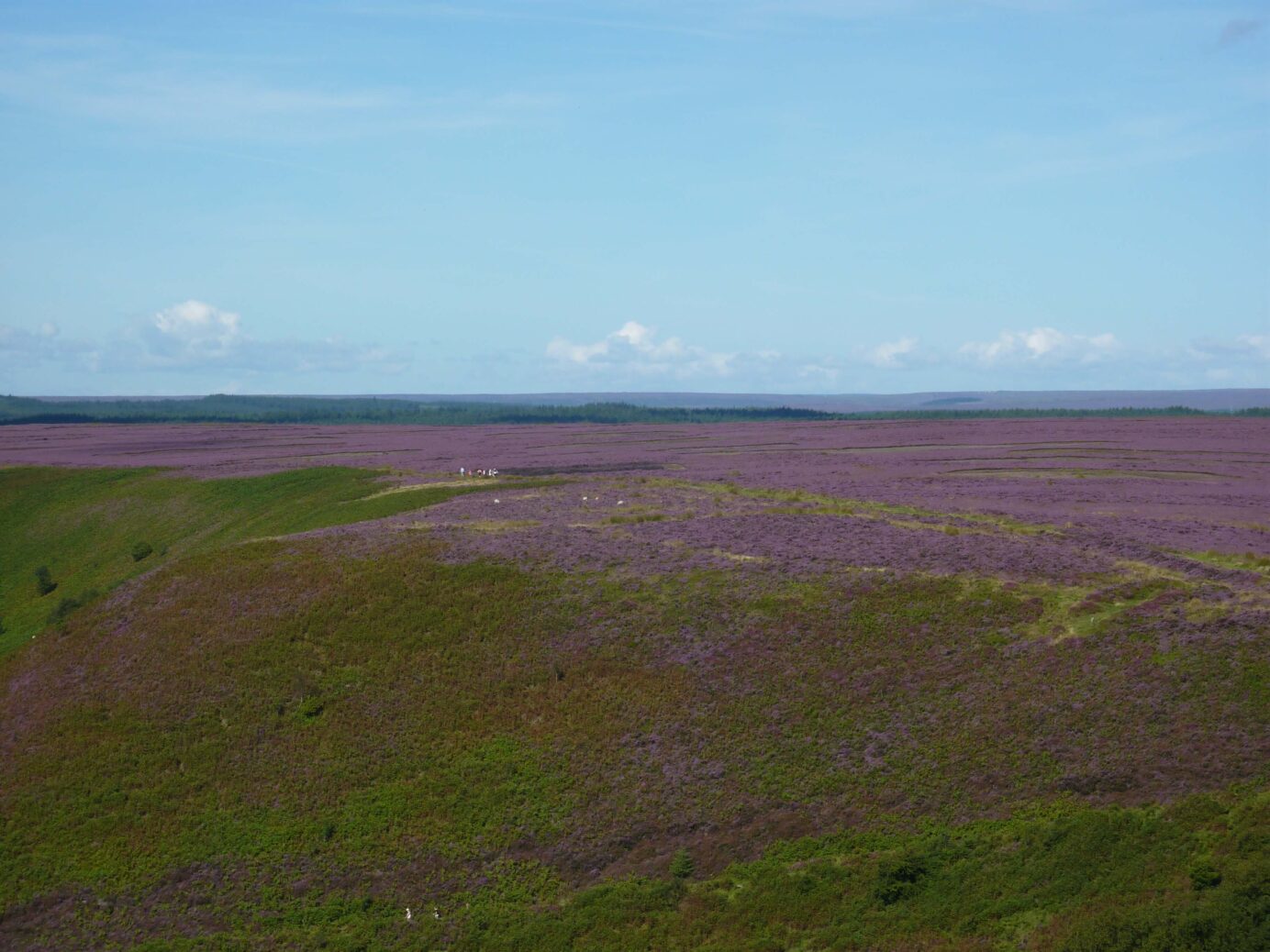August in the North York Moors brings a truly magical transformation: the heather bursts into a magnificent tapestry of purple and pink, warmed by the summer sun. For an unforgettable experience, join us on a Hole of Horcum heather walk. This immense natural amphitheatre, measuring a staggering 400 feet deep and roughly three-quarters of a mile across, is woven with ancient folklore. Offering views that stretch forever across this beloved moorland, its scale truly defies imagination! Local legend tells of a giant named Wade who supposedly formed the depression by hurling a clump of earth during a spat with his wife. While the science behind its formation might be less dramatic—erosion caused by water eroding the rocks causing the ground to collapse—it doesn’t make the experience any less magical.
Our recommended 5-mile Hole of Horcum walk begins and ends at Saltergate Car Park, immediately revealing this natural phenomenon and some of the most spectacular vistas in the entire North York Moors National Park.


The Hole of Horcum Heather Walk: Your Route Guide
As you arrive at Saltergate Car Park, prepare to be captivated by the sweeping panorama of the Hole of Horcum. This isn’t just a valley; it’s a colossal natural amphitheatre, acting like an enormous bowl carved into the earth.
After safely crossing the A169, take a moment to enjoy the incredible view from the newly installed viewpoint – your route stretching out before you. Begin your journey by following the wide footpath to the right, winding around the dramatic edge of the “hole.” A short walk brings you to a gate where the path continues along wide footpaths over Levisham Moor. Carpeted in heather and offering elevated views down into the Hole, this wide pathway continues for around two miles. Keep an eye out for glimpses of the RAF Fylingdales station across to the east.
On arrival at a signpost reading ‘Hole of Horcum’ follow the course around to the left. Here, the scenery undergoes a subtle change – and you’ll want to keep an eye out for the magnificent Highland Cattle that often graze in this area!
The Route: Descent, Detours & The Ascent
You’ll then begin your descent into Dundale Griff, an area rich in history, once home to a medieval monastic sheep farm. Once you reach Dundale Pond, you’ll find an optional extension to your walk: divert to Skelton Tower (signposted towards Levisham Station). This adds an extra two miles to your journey but rewards you with a fantastic view of the steam trains chugging along the North York Moors Railway – a truly iconic photo opportunity! If you choose not to divert to Skelton Tower, continue along towards the Hole of Horcum through the heather.
Further down, another signpost marks the meeting of the river and stream. Take another left, and from this point, you’re truly in the middle of this geological marvel. The trail meanders gently through lush fields and past the remains of an old farmstead, now peacefully surrounded by grazing cattle and sheep.
The ascent back up to the summit isn’t a long one, but it offers a satisfying climb. Upon reaching the top, you’ll loop back around to your starting path. A final right turn guides you back to Saltergate Car Park, where you’ll often find a refreshment van waiting to offer a well-deserved treat!
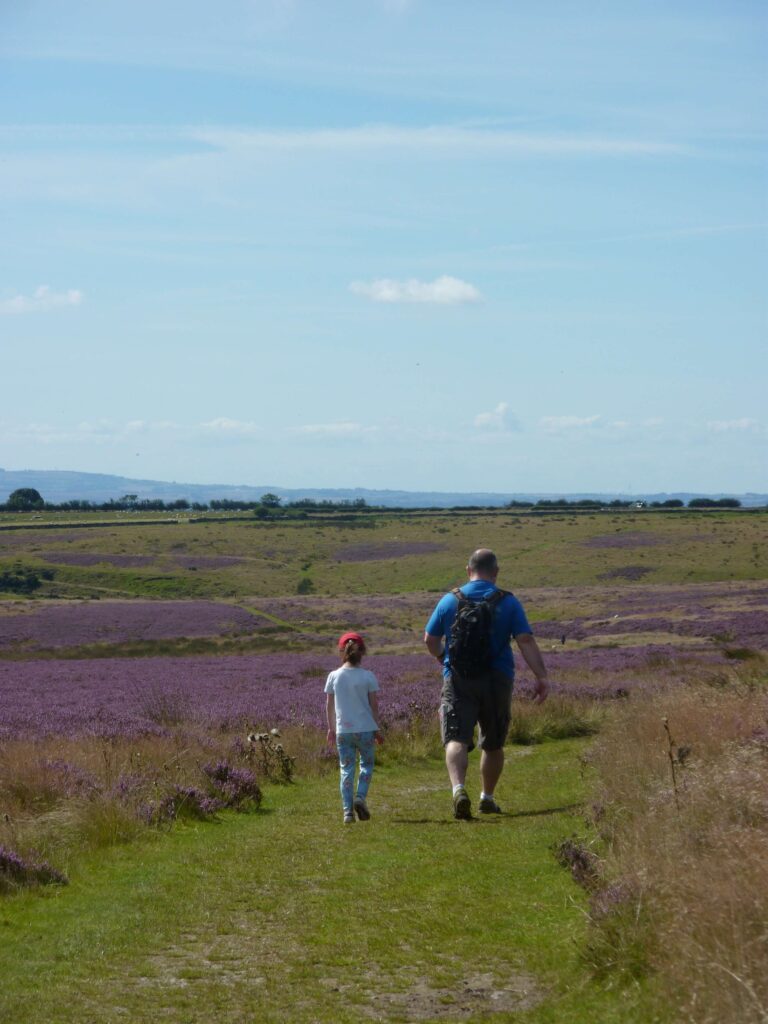
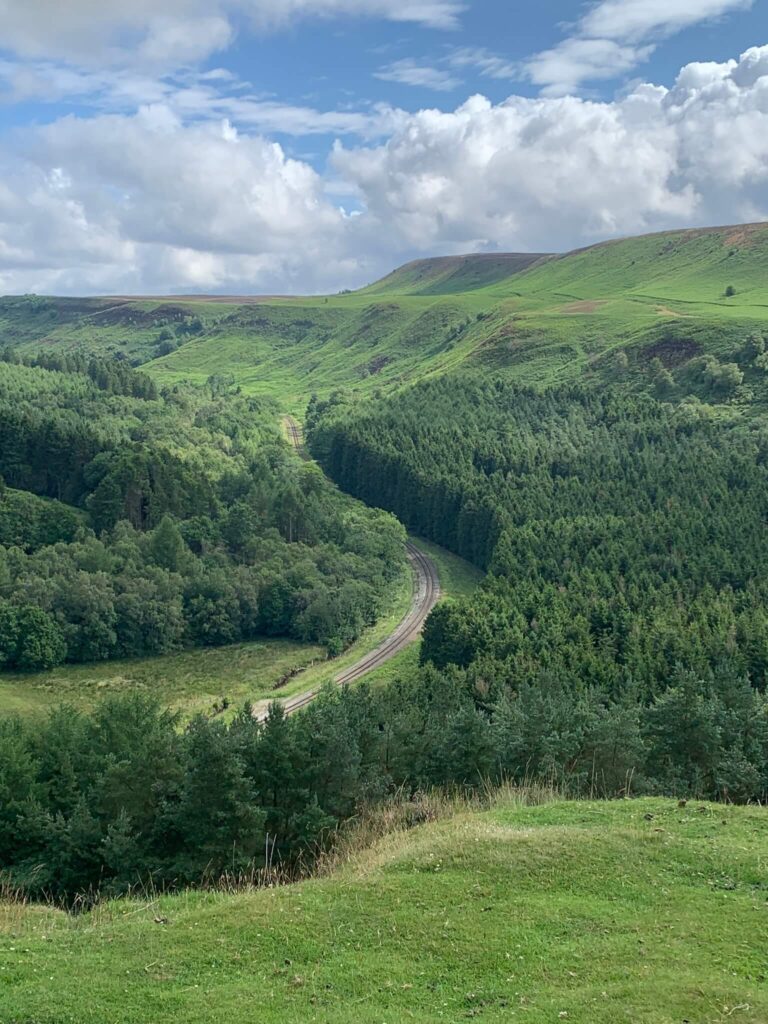
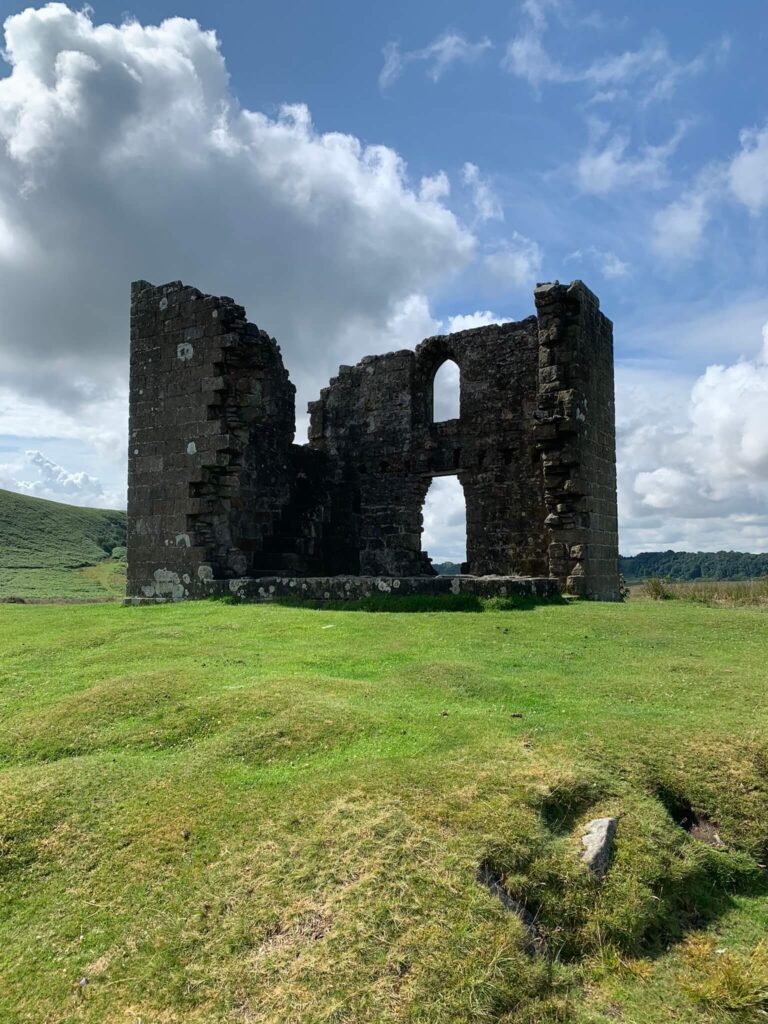
Wildlife along your route
Beyond the picturesque moorland sheep, the Hole of Horcum walk offers ample opportunities for a truly immersive wildlife experience. Remember to bring your binoculars for a closer look!
In August, as the heather blankets the landscape, Levisham Moor becomes a haven for a variety of fascinating moorland birds. Keep an eye out for the vibrant red grouse, the distinctive curlew, elegant golden plover, secretive snipe, and the acrobatic lapwing. You might even be lucky enough to spot birds of prey like the swift merlin soaring overhead.
Watch your step, as you may even encounter an Adder. There’s no need to panic; simply observe these beautiful reptiles from a safe distance before carefully walking around them. Similarly, you might come across majestic Highland Cattle – they will generally ignore you, but always remember to keep dogs on leads and avoid splitting the herd.
Take a moment to listen! You’re sure to hear the busy buzz of Honey Bees hard at work. Beekeepers often move their hives to the moors specifically for the Ling Heather. You might even cross their flight path; these bees are heavy with nectar and far more interested in getting their precious cargo home.
The moors are also home to a delicate array of other insects, including beautiful damselflies, moths, and butterflies, all adding to the vibrant ecosystem.

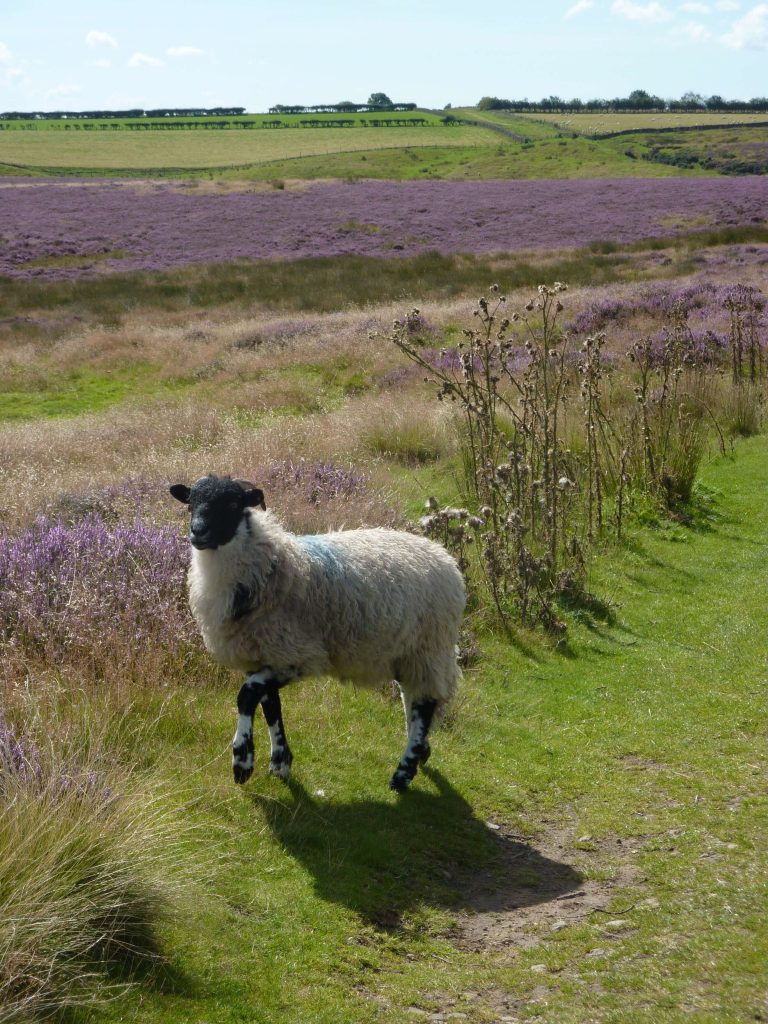
Walking Stats & Final Thoughts
Here are the key details for planning your Hole of Horcum heather walk.
- Difficulty: Moderate – expect some rocky paths and hills.
- Length: 5.2 miles (with the option to extend by adding Skelton Tower).
- Time: Allow 3-4 hours to complete the loop at a comfortable pace.
- Start/Finish: Saltergate Car Park, conveniently located on the A169 (the main road between Pickering and Whitby). Ample parking is available, though charges do apply.
After such a rewarding walk, you’ll likely be ready for a hearty pub lunch or a nice refreshing drink. You’ll find exactly that at the Fox and Rabbit, just 3.5 miles south on your way back towards Pickering. Alternatively, continue into Pickering itself for a wide range of cafés, pubs, and bakeries to refuel.
This walk offers an incredible opportunity to immerse yourself in the natural beauty of the North York Moors. It’s a truly stunning experience any time of year, but particularly breathtaking when the heather carpets the landscape in vibrant purple and pink during late summer and early autumn. Therefore, we highly recommend adding this stunning experience to your itinerary during your visit!
